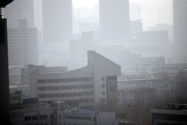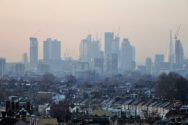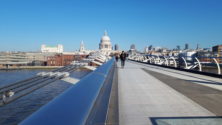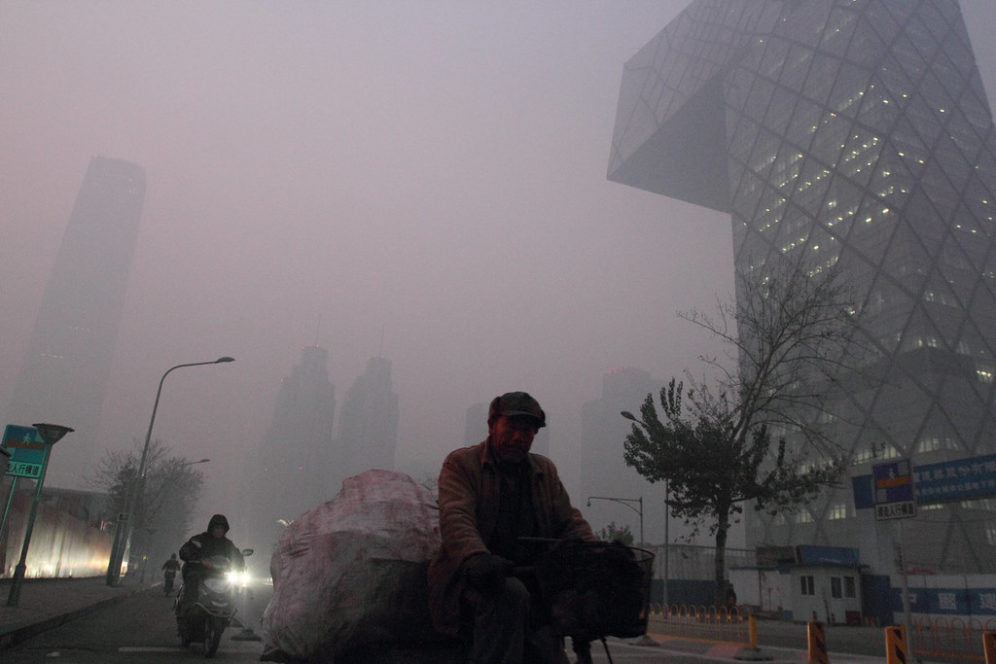
March 04, 2020
Transit Solutions for the Air Quality Crisis
Our cities are in the midst of an air quality crisis. According to the World Health Organization, 80 percent of urban residents are breathing air that does not meet standards for health, with middle- and low-income nations suffering from the highest exposures.
While air quality concerns are far from breaking news, the issue is receiving new attention, as studies are proving a much stronger link between health and air pollution than was previously thought. Exposure to toxic air pollution can cause heart attacks, premature deaths, delays in early childhood development, asthma, and other health issues. Road transport, which includes passenger vehicles, heavy-duty freight vehicles, and buses, is a significant contributor to air pollution, resulting in poor air quality. The transportation sector emits pollutants that are harmful to human health (particulate matter [PM], sulfur dioxide [SO2] and nitrogen dioxide [NO2]) and those that contribute to climate change and other environmental harms (greenhouse gases [GHGs] including carbon dioxide [CO2]). We know that in Europe alone, road transport is responsible for about 40% each of PM 2.5 and nitrogen oxide emissions. In the United States, road transport accounts for roughly 29% of greenhouse gas emissions. The transportation sector is responsible for 20% of CO2 emissions and about 30% of all GHG emissions. Transportation is the fastest-growing source of global climate emissions.
What does Air Quality Mean?
Many air quality improvement strategies aim to reduce two main types of pollutants from tailpipe emissions: GHGs and particulate matter. GHG emissions include carbon dioxide, nitrous oxide, and methane and these emissions make the planet warmer, contributing to climate change. The most problematic and frequent of these is carbon dioxide (CO2) which comes from burning fuels like petrol and diesel.
While CO2 is harmful for people, the most toxic and dangerous pollutant for human health is particulate matter (PM). PM are small particles (PM10 particles have a diameter of less than 10 microns, while PM2.5 particles have a diameter of less than 2.5 microns) that can be easily inhaled into the lungs. Particulate matter is almost impossible to see but is incredibly harmful, causing premature death, stroke, heart disease, pulmonary disease, and acute respiratory infections. The WHO estimates that 4.2 million people die every year from particulate matter.
Compared to high income countries, air quality is disproportionately worse in low and middle income countries and, within those countries, lower income communities often suffer more due to the proximity of their housing to major roads and highways. Most road transport emissions come from personal vehicles, which low income people own at a much lower rate than wealthier urbanites. In other words, low income communities are less responsible for but more burdened by poor air quality. Many cities have recognized this inequity, which must be kept at the forefront of any policies or programs enacted to curb air pollution. As air quality becomes a growing topic and policy concern, recognizing the different harms caused by fuels will be important in ensuring that policy decisions combat both forms of emissions.
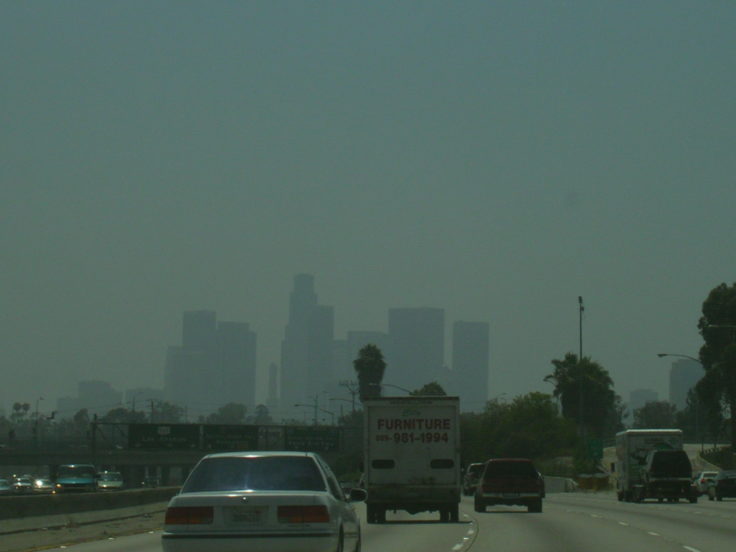
There are practices and policies that governments are exploring to try and curb air pollution.
In general, governments are slow to adopt policies to control cars, anticipating strong pushback from drivers. Yet, forward-thinking cities are taking steps to control car access as a way to curb climate change and protect human health and development. Many are considering strategies like low emission zones, congestion pricing, and bus electrification for the first time, as both air pollution and traffic congestion are becoming impossible to ignore. ITDP is currently working in Mexico City and Rio de Janeiro on low emission zones while in Jakarta focusing on electrification of the BRT.
Low Emission Zones
Low Emission Zones (LEZs)are policies designed to improve air quality by controlling or curbing emission rates coming from transportation. They work by either charging high polluting vehicles to enter, or blocking access entirely from certain types of vehicles that do not meet a predetermined emissions standard. Often, electric or vehicles meeting certain fuel standards are permitted to enter or are exempt from the charge, depending on the scheme’s design. Throughout Western Europe, over 200 cities have enacted LEZs, however many of these have historically applied to heavy-duty vehicles like large trucks and buses, and only in the past year or so have included more passenger vehicles. Though evidence is nascent, there is hope that these policies will have positive effect on human health by reducing PM and NOx in the air. Their impact on GHG emissions is less clear, particularly considering the potential for pollution displacement. The reality of exempting vehicles in high-income countries and cities could mean that replacing a vehicle with a less-polluting one that meets the LEZ standard, will lead to consumers buying new cars more frequently and even the possibility of countries shipping the higher-polluting vehicles elsewhere to places where the cars will continue to pollute. Overall, the efficacy of LEZs has depended on the cities’ enforcement and level of stringency in the types of vehicles restricted from the zone. London enacted a low emission zone in 2008 and expanded it into an ultra-low emission zone (ULEZ) in 2019, after which the health and emission effects were immediately clear.
Politically LEZs can be difficult gain public support and to pass at first. However, once LEZs are enacted, public enthusiasm often grows. For example, last year in Madrid, a new mayor tried to remove a low emission zone and was met with major public resistance ultimately backing off of much of his plan, but the plan remains contentious in the courts with the government fighting with environmental groups.
Spotlight on Madrid
In Madrid, residents have been given permits to drive in specific zones, while outside residents are not given access, with the exception of electric vehicles, emergency vehicles, and public transportation. Emission rates within the limited traffic zone were greatly decreased: within the zone CO2 and NOx dropped by 28% and 14% respectively. The zone also decreased the traffic by about 5%. Politics are very much in play when it comes to low emission zones. In 2019, the new mayor, supported by the far-right, made removing the emissions and vehicle restrictions in the central zone a part of his campaign. However, his decision to end the zone was met with fierce oppositions from Madrid’s very residents and he was ultimately not successful. Now, Madrid’s mayor has unveiled Madrid 360, a less restrictive low emission zone but still with the same goal of lowering emissions – just in a different manner. Importantly, the government recognizes the need for improved air quality for its residents.

Congestion charging
Congestion charging is a system that charges a fee for all cars entering a specific zone often during peak hours. This differs from low emission zones because it is a blanket charge on all cars with the goal of limiting cars in general, not just based on emitting rates. While congestion charging is typically presented as a policy to both reduce traffic and increase revenue that can be diverted to public transportation, there is hope that it can help curb emissions. Because a congestion charge is typically more stringent than a LEZ, impacts on air quality are more promising. For example in London, the congestion charge has led to a reduction of particulate matter by 15%, which may contribute to longer lives and decreased mortality rates. In Stockholm, asthma in children decreased as a result of congestion pricing. In Durham, England, traffic was reduced by 90%. In New York City congestion pricing with implementation 2 years later.
The cities of London, Stockholm, and Singapore have demonstrated congestion pricing successes; London reduced emissions of particulate matter and nitrogen oxides by 12 percent with GHG and carbon dioxide emissions dropped by 20 percent. Singapore’s policies cut emissions by 175,000 lb of carbon dioxide each day while Stockholm’s congestion pricing decreased CO2 by 14% in its central area. Despite initial political opposition, residents recognized the benefits offered by road pricing and became supportive. There is less traffic, enabling road and parking spaces to be used for more essential uses funded by these fees, such as public transit, housing and public space, making for a much faster trip within the city, regardless of mode. Time after time, we’ve seen that businesses in the city center have more customers with increased foot traffic than they ever could with free parking.
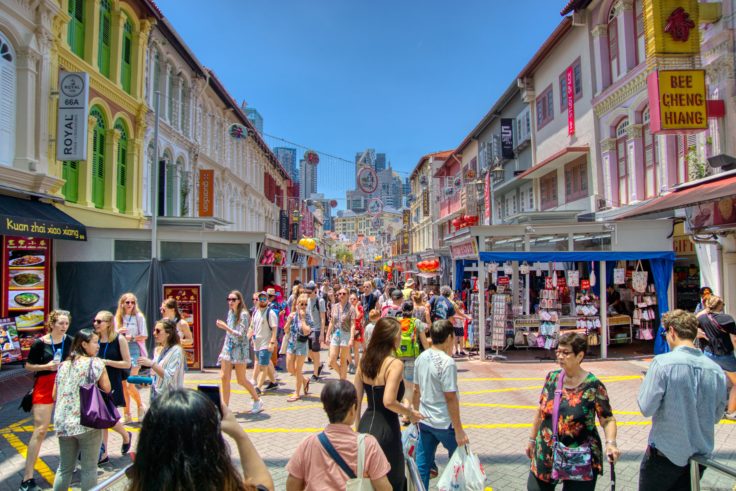
Electric Buses
Electric vehicles present a great option to decrease emissions, but electrifying personal cars won’t be enough. In most of the major cities outside of the US and Australia, private vehicle usage comprises less than 50% of all trips. Therefore, solutions aimed at cars don’t offer enough opportunities for improved emission rates. It is more important to focus on improving transit, heavy duty freight, logistics vehicles, and mode shares. Upgrading bus fleets to less polluting vehicles, often battery electric, has the opportunity to cut emissions significantly. For example, if rapidly expanding cities in Latin America electrify their bus fleets by 2030, we could see a decrease of 300 million tons of carbon dioxide, the equivalent of taking 63 million passenger vehicles out of service every year.
Buses present a significant opportunity to cut harmful emissions because they complete many trips per day in cities, and studies have indicated that pollution from buses can be particularly toxic. For instance, in São Paulo, buses make roughly 10 million trips a day; to cut emissions from so many trips would be significant.
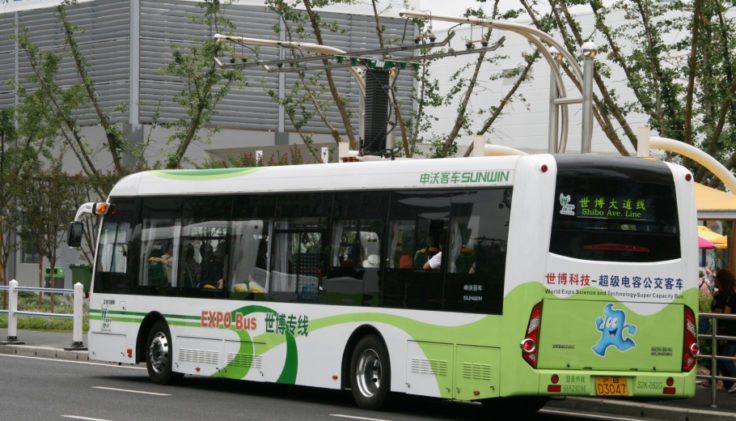
People-first solutions
One policy which has ingeniously lowered car usage in an urban area is the shared street superblocks of Barcelona. In Barcelona, superblocks (Superilles or Supermanzanas) are zones that divert through vehicle traffic with particular streets with one way designs, meaning that cars can pass but only by taking a circuitous route, which discourages driving and requires those within the block to follow a strict and low speed limit. Additionally, speed limits within the zone are lower. While this policy was initially met with resistance, it has now grown to 20 superblocks in Barcelona. The superblocks have led to 40% reduction in traffic, and 26% reduction in the region, marking a true mode shift. One of the reasons this approach has been successful is that it hasn’t explicitly banned cars, just diverted them, so politically people are more receptive.
There is no one-size-fits-all solution for solving air quality concerns in urban areas – because cities are complex, solutions will be as well. As we learn more, it is the role of governments to provide safe and clean air to residents. As more cities implement these policies, other cities can learn more about what to do to protect our health, and our planet. While policies that involve curbing or limiting car usage are politically fraught, the harmful effects of car usage are too significant to not do more.

